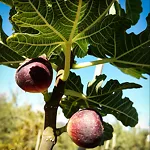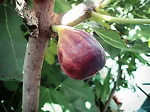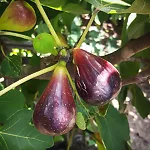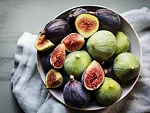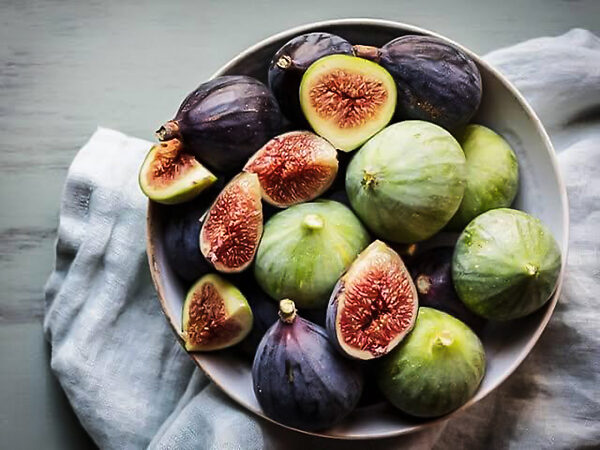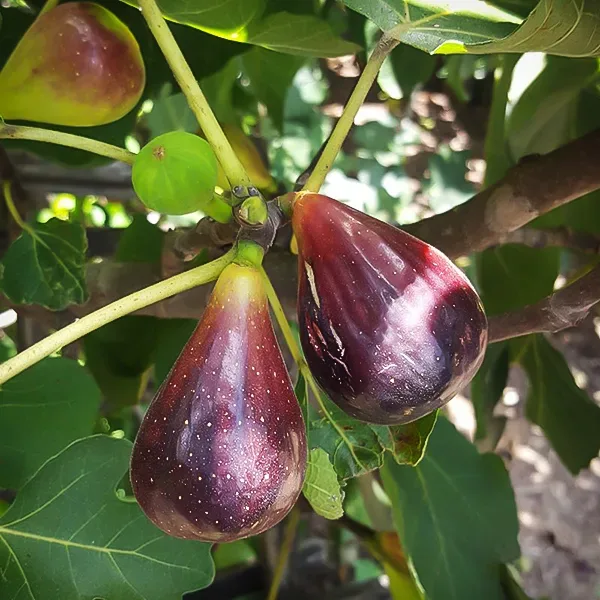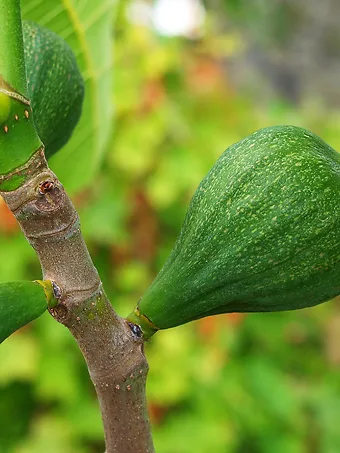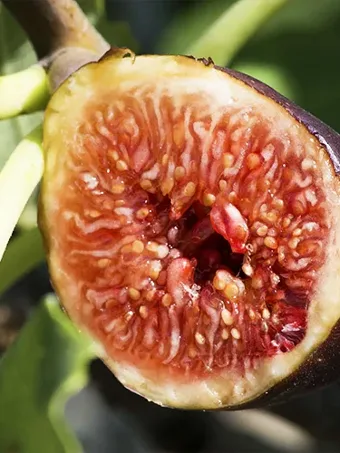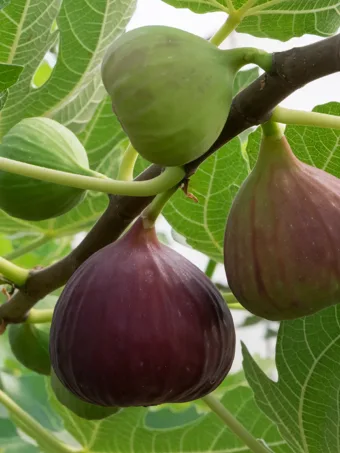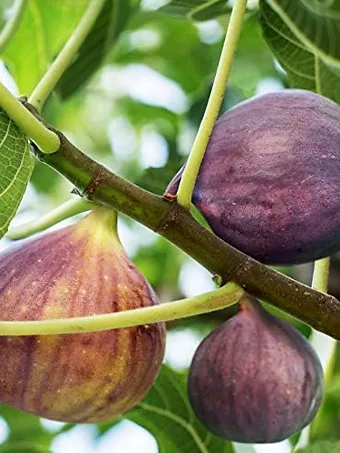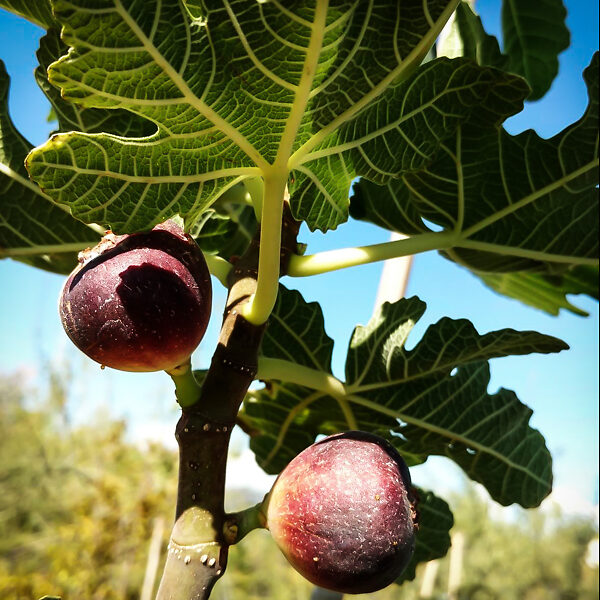
Black Italian Fig
Ficus carica 'Black Italian'View more from Fig Trees
Black Italian Fig
Ficus carica 'Black Italian'
30 day - ARRIVE AND THRIVE™ guaranteeLearn more


Special Features
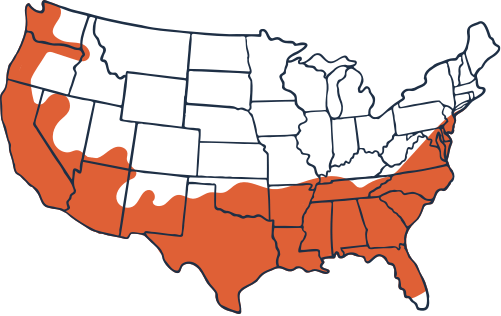
Botanical Name
Ficus carica 'Black Italian'
Outdoor Growing zone
7-9
Mature Height
10-30
Mature Width
5-20
Sun needs
Full Sun
The Italian Black Fig is an heirloom variety that produces large fruits with a glossy black skin and deep red flesh. The flavor and quality is exceptional for eating fresh, and the fruit can also be dried for winter. Two crops are produced – a smaller one in summer and a large harvest in fall. Grow it as a free-standing tree or spread it out on a south-facing wall, which is a good location in zone 7. This tree is very drought resistant and needs no special attention, and it is one of the easiest fruit trees to grow successfully.
- Large black fruits with glossy skin and deep red flesh
- Carries both a summer and a fall crop
- Large leaves are very ornamental
- Easily grown in any sunny place
- Very drought resistant and heat tolerant
For a good harvest the Italian Black Fig Tree should be grown in full sun. Plant in any well-drained soil, and drier, poor soils are preferred, giving the best crops. Rich soil will produce many leaves but few fruits. Once established watering is almost never needed, but in hot and dry states mulch will conserve rainfall and protect the roots in winter. Pests or diseases are virtually unknown, and just a simple summer pruning encourages a big crop.
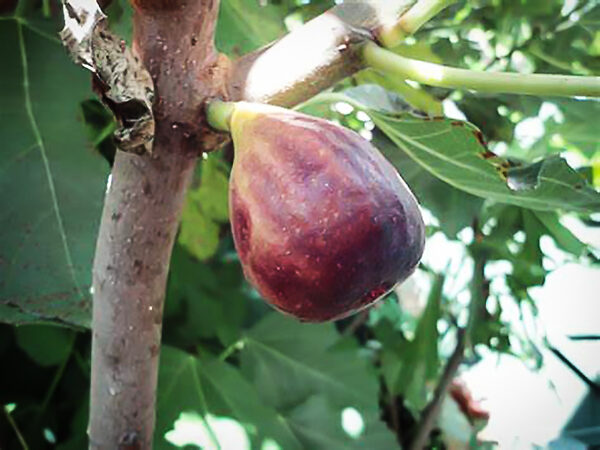
When it comes to growing fruit at home, our advice is to grow varieties that are not commonly found in stores. It makes sense, because why do the work of growing something you can pick up at the corner store? Instead, choose rarer plants, which are often superior in flavor and quality, but not grown commercially because they are perhaps too delicate to ship well, or don’t produce the big crops orchards need to turn a profit. A fig tree is easy to grow, and no store fig can ever match one ripened on the tree, so if you are looking for a fig tree, the Italian Black Fig should be at the top of your list. This variety has been prized since the 18th century, when it was brought to England from Italy. Something has to be really good to be nurtured and enjoyed for that long. Cut one open, admire the deep red flesh and the rich purple skin, and then bite into a sun-ripened fig from your own tree, still warm from the golden rays – ah, life is good!
Growing the Italian Black Fig
Size and Appearance
The Italian Black Fig is a broad, spreading deciduous tree with a sturdy trunk and relatively thick stems. The bark is smooth and brown, turning gray on older stems. The mature size of your tree will depend on your climate and how you grow it, but this is a fast-growing tree, and it can reach perhaps 30 feet tall and almost as wide, with a rounded, dome-shaped crown. Older trees will be even larger in time. The large green leaves are distinctive, and very ornamental. They are up to a foot long and wide, divided into 3 or 5 large lobes, which are then further divided into large teeth, giving even a small tree a very decorative look. The surface of the leaves is dry and rough, covered with short, stiff hairs.
The fig has unique flowers, because they are never visible. Instead they are carried inside a rounded structure, a swollen stem tucked into itself, which becomes the fig fruit as it ripens. The many small flowers are pollinated in the wild by a tiny wasp, but garden figs are all female, and develop fruit without needing pollination. Fresh fruit has no seeds, making them deliciously soft. The fruit is attached by a stalk to the stem, and it begins green, ripening to a glossy black, without the dusty blue-gray ‘bloom’ seen on some other fig varieties. The flesh is a deep, mouth-watering red color. This fig produces two crops. The first, in early summer, develops from immature fruit held on the tree over winter. This is called the ‘breba’ crop, and in the Italian Black Fig there is a moderate yield at this time. The abundant main crop ripens in fall, from fruit that develops on the new spring growth.
For eating raw it is best to allow the fruit to fully ripen on the tree, when it will be nature’s candy – sweet and lush, with a unique delicate flavor unlike anything else you have ever eaten. Fresh figs taste quite different to the more-familiar crunchy dried figs. You can tell the fruit is ripe when the stalk softens and the fruit bends over, but slightly under ripe fruits are good for salads. You can easily dry your own from your harvest, so that you can store them for months.
Using the Italian Black Fig in Your Garden
In warmer zones the Italian Black Fig can be grown as a free-standing tree, where it makes an excellent shade tree, and it’s a good choice for hot, dry places. In zone 7 it is best grown against a south-facing wall, tied back and spread out, so that the fruit receives the maximum amount of sun for full development and ripening.
Hardiness
The Italian Black Fig is hardy in all the warmer zones, from zone 7. In colder zones we recommend the Brown Turkish Fig and the Celeste Fig, both of which will grow outdoors in a sheltered spot in zone 6, and they can also be grown in pots and stored indoors in winter in zone 4 or 5.
Sun Exposure and Soil Conditions
Always grow the Italian Black Fig in full sun, in the warmest part of your garden, and without any shade. Although it will grow in shade, it will produce no fruit, but still be ornamental. This tree thrives in drier, well-drained soil, and it grows best in poorer soils, so don’t enrich the soil with compost, or use fertilizer. Rocky, sandy soils are perfect, and once established it is completely drought resistant and will probably never need watering. In hot and dry regions mulch will help conserve natural soil moisture and protect the roots from winter cold.
Maintenance and Pruning
The Italian Black Fig is usually free of pests and diseases and very easy to grow. To grow it on a wall, plant right against the base of the wall, and spread out the branches, tying them back to nails, or onto horizontal wires stretched across the wall every 18 inches. To control the size, and encourage shorter branches with a heavier crop, prune the new stems in early summer. Cut them back to 5 or 6 leaves around the end of May, once they have made enough new growth. This will encourage fruiting and develop a smaller, more compact tree. In late winter remove any dead, damaged or crowded branches.
History and Origin of the Italian Black Fig
The fig tree, Ficus carica, has been grown in southern Europe since the beginning of agriculture, thousands of years ago. Many varieties developed suitable for the climates in different regions of Spain, Italy and Greece. In the 18th century Phillip Miller, a famous English gardener of the time, brought a collection of varieties back to England from Venice, and most of our figs today can be traced back to that collection. The variety called ‘Black Italian’ was on Miller’s original list, and it is also referred to in early 19th century books like John Wilkes’ Encyclopaedia Londinensis from 1817 and Sir David Brewster’s Edinburgh Encyclopædia, from 1830. We don’t know how this variety arrived in America, but it was probably as a bundle of dormant branches carried carefully on a ship by a settler. It has been grown in Texas for a long time.
Buying the Italian Black Fig at The Tree Center
If you have a suitable sunny place to grow it, the Italian Black Fig is one of the easiest fruit trees to grow, with no spraying or fancy pruning needed. Its outstanding fruit will be an instant favorite in your home, but order your tree now, as this heirloom variety is always in high demand, and it sells out very quickly.
